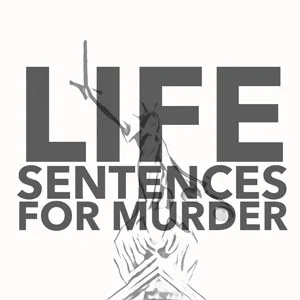Imposing Life Sentences for Murder and Other Serious Offences
All Contents > Sentencing Home > How Sentencing Works > My Sentencing Hearing > Sentencing Guidelines > Life Sentences > Extended Sentences
“For an offence of murder, a life sentence is mandatory, although as you can see on this page, life rarely means life. Only where a Whole Life Order is imposed will an offender be ineligible for release on parole.
In other cases, where the individual offence carries a maximum of life, a sentence of imprisonment for life is discretionary. ”
On this page:
Life Imprisonment
Life Sentences for Murder
Step 1 - Determine the starting point
The ‘exceptionally high' seriousness category
The ‘particularly high seriousness category
The ‘weapons’ category
The ‘usual’ category
Starting points for youths
Step 2 - Adjusting the starting point
Step 3 - Final adjustments
The Minimum Term and Parole
Recent Cases - Sentencing for Murder
Life Sentences for Dangerous Offenders
Life Sentences for defendants with a previous conviction for a listed offence
Life Sentence for manslaughter of emergency workers
LIFE SENTENCES
Life sentences are reserved for the most serious offences and offenders.
For an offence of murder, a life sentence is mandatory, although as you can see on this page, life rarely means life. Only where a Whole Life Order is imposed will an offender be ineligible for release on parole.
In other cases, where the individual offence carries a maximum of life, a sentence of imprisonment for life is discretionary, albeit required in certain circumstances.
There are three further situations in which a judge is likely to consider imposing life imprisonment for serious offences: first, where the defendant is assessed as a dangerous offender; secondly where the defendant already has a previous conviction for a serious offence; and thirdly when a defendant is convicted of the manslaughter of an emergency worker. You can read about all of these below.
LIFE SENTENCES FOR MURDER
For murder, life imprisonment is the only sentence that can be imposed for defendants aged 21 or over. Defendants convicted of murder aged 18-20 are sentenced to custody for life and juveniles (under 18s) are sentenced to detention during His Majesty’s pleasure.
Sentencing in Murder Cases
Life rarely means life. When passing a life sentence a judge usually imposes a minimum custodial term (a minimum term order) that must be served before an application can be made for release on parole; once released a defendant will be on licence for the remainder of his/her natural life and may be recalled to prison if considered a risk to the public (this may involve committing a further offence but does not need to).
In the most serious cases of murder, a Whole Life Order can be imposed, in which case life does mean life. When this happens there will be no minimum term imposed and the prisoner will not be eligible for release at any time. A prisoner in this situation can only be released by the Home Secretary on compassionate grounds (e.g. due to very poor health).
When a minimum term order is imposed, there is no sentencing guideline for deciding on the appropriate minimum term. Instead, the Sentencing Code (Sentencing Act 2020, sections 321, 322 and Schedule 21) sets out the approach the courts should take.
[For defendants sentenced before 1 December 2020, the minimum term will have been decided under the equivalent provisions contained in the Criminal Justice Act 2003 sections 269 to 277 and Schedule 21.]
The 3-step approach to sentencing in murder cases
Schedule 21 sets out the general principles that judges follow in cases of murder.
Step 1 - Determine the starting point.
Step 2 - Adjust the starting point in line with any additional Aggravating or Mitigating Factors
Step 3 - Adjust the sentence in line with any previous convictions, offences committed on bail, guilty pleas and any time spent on remand.

















